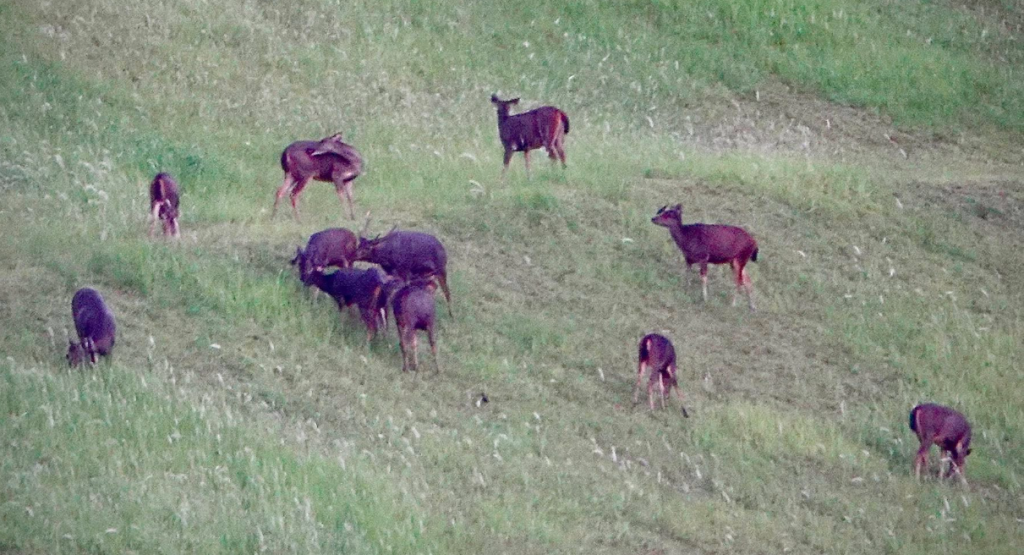Rare Sighting: 11 Sambar Deer Grazing on a Woodlands Slope
A rare sighting of 11 sambar deer grazing peacefully on a grassy slope near Woodlands has captured the attention of nature lovers in Singapore. The images were shared by M Saniroz AR on the Singapore Wildlife Sightings Facebook group, quickly garnering over 1,600 reactions as of 25 July 2025.
Contrary to some assumptions, the deer were not spotted at Mandai Wildlife Reserve but rather near a train depot off Woodlands Road. This sighting has sparked delight among those who appreciate seeing wildlife roaming freely within the city’s urban landscape.
Some observers, however, expressed concern that the deer’s appearance in such open spaces may signal a shrinking natural habitat. There were also questions raised about their daytime activity, given that sambar deer are known to be primarily nocturnal.
Understanding the Sambar Deer and Their Habitat

Sambar deer rank among the largest deer species globally, following moose and elk in size. According to the National Parks Board (NParks), they predominantly inhabit dense rainforests, open deciduous forests, and secondary forests. Their typical behaviour involves active periods at dusk and night, with daytime rest in thick vegetation.
These deer tend to live in small herds and communicate through scent marking and foot stamping. Their diet is diverse, including grasses, leafy foliage, fruits, water plants, shrubs, and trees.
While some wildlife enthusiasts have suggested fencing off areas to protect the deer’s habitat and ensure their safety, others welcome seeing the animals adapt to Singapore’s “concrete jungle.”
Population Recovery and Conservation Status
The sambar deer were once thought to be locally extinct due to habitat loss and poaching but have made a gradual comeback since the 1970s. In 1997, the Nature Society Singapore estimated only three deer remained in the wild.
The current population is believed to descend partly from animals that escaped from the Singapore Zoo. NParks estimated about 15 deer in 2021, but independent monitoring by Save Sambar Deer’s leader Jay Lim suggests the number may be closer to 40. By 2023, both NParks and Lim agreed the population has risen to over 60.
Most sightings occur in forested regions like the Central Catchment Nature Reserve and Bukit Timah Nature Reserve. Despite this progress, the sambar deer remain classified as a vulnerable species by the International Union for Conservation of Nature (IUCN).
